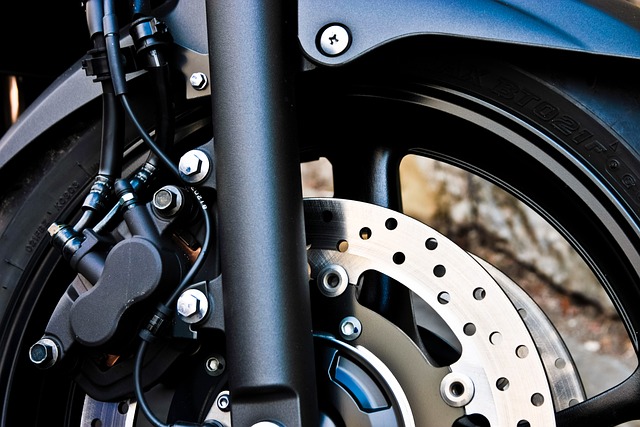Connection Detailing Drafting, a cornerstone of steel fabrication, leverages advanced CAD software to create precise 3D models from design blueprints. This meticulous process meticulously maps every connection point in complex metal structures, ensuring structural integrity and guiding fabrication teams. By designing critical connections like welds, brackets, and fastenings with exact measurements, it enhances building durability, safety, and cost-efficiency. Future trends include automation via AI, virtual testing, and Industry 4.0 technologies to further elevate accuracy and sustainability in steel connection drafting across diverse projects like architecture, bridges, high-rises, and renewable energy infrastructure.
“Connection detailing drafting is a vital art in steel fabrication and construction, ensuring structural integrity and aesthetic precision. This comprehensive guide explores the intricacies of this process, from its foundational principles to advanced techniques. We delve into the key components that constitute precise steel drafting, highlighting its transformative role in construction projects.
Through examining real-world applications, we uncover why connection detailing is a game-changer, offering enhanced structural performance and design flexibility. Additionally, we provide insights into best practices and emerging trends shaping the future of steel connection drafting.”
Understanding Connection Detailing Drafting: The Foundation of Steel Fabrication
Connection detailing drafting is a critical and foundational aspect of steel fabrication and construction. It involves creating precise technical drawings that outline how various components of a steel structure will interlock, join, or connect with each other. These detailed drafts are not merely blueprints; they serve as the blueprint for assembling complex metal structures, ensuring strength, stability, and safety.
Skilled draftspersons use specialized software to meticulously map out every connection point, including bolt patterns, welding seams, and fitting dimensions. This meticulous process is key in preventing structural failures and ensuring compliance with building codes. Effective connection detailing drafting enables efficient fabrication by guiding workers and machinery throughout the construction phase, making it an indispensable tool in the steel industry.
Key Components and Techniques in Precision Steel Drafting
Precision steel detailing drafting is a complex yet essential process that forms the backbone of fabrication and construction projects, especially in creating intricate metal structures. The key components and techniques within this discipline involve meticulous planning and execution. Drafters must first interpret design blueprints, transforming two-dimensional schematics into comprehensive three-dimensional models using specialized CAD (Computer-Aided Design) software. This digital transformation is crucial for accurate representation and seamless communication between different project stakeholders.
The draftsperson then delves into the intricate details of connection detailing drafting, which involves designing specific features that ensure structural integrity at points where metal components join. These connections include welds, brackets, and fastenings, each requiring precise measurements and specifications to withstand stresses and forces during construction. By leveraging advanced drafting tools and software, professionals can create detailed drawings with tolerances, dimensions, and material specifications, serving as critical reference guides for fabricators and construction teams.
Benefits and Applications: Why Connection Detailing is Crucial in Construction
In the realm of construction, connection detailing drafting serves as a game-changer, revolutionizing the way structures are built. This precise steel detailing process is crucial for ensuring the integrity and durability of any fabrication project. By focusing on the intricate connections between various components, drafters create robust links that withstand the rigors of construction and beyond.
The benefits are manifold: it enhances safety by minimizing potential failure points, streamlines the fabrication process, and reduces costs associated with rework. In terms of applications, connection detailing is vital for complex architectural designs, bridge construction, high-rise buildings, and even renewable energy infrastructure. It ensures that every joint, bolt, and fastener is precisely drafted and specified, facilitating seamless assembly and a structural framework that stands the test of time.
Best Practices and Future Trends in Steel Connection Drafting
In the realm of steel fabrication and construction, precise connection detailing drafting is a game-changer. Best practices involve utilizing advanced CAD software for accurate 3D modeling, ensuring seamless integration of design and manufacturing processes. Standardized symbols and conventions should be adopted to streamline communication among stakeholders, minimizing errors and delays. Regular quality checks and peer reviews are essential to validate the integrity of the draftings before production.
Future trends in steel connection drafting point towards increased automation and digital integration. AI-driven tools promise to enhance efficiency by automating repetitive tasks, while advanced simulation software will enable virtual testing of connections under various load conditions. Additionally, the adoption of Industry 4.0 principles, such as IoT sensors and cloud-based data management, is poised to revolutionize the industry. These innovations not only improve accuracy but also foster a more sustainable and efficient construction process, ensuring indelible progress in steel detailing drafting.
Connection detailing drafting is an indispensable skillset in modern fabrication and construction, serving as the intricate blueprint for seamless steel structure assembly. By mastering this precision technique, engineers and drafters can unlock the potential for complex designs, ensuring structural integrity and efficiency. As the industry continues to evolve, embracing innovative tools and digitalisation while upholding rigorous quality standards will be key to shaping the future of steel connection detailing drafting, ultimately driving progress in construction projects worldwide.
